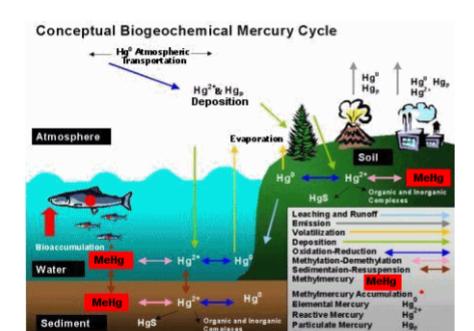ENSC after midterm 2
1/28
There's no tags or description
Looks like no tags are added yet.
Name | Mastery | Learn | Test | Matching | Spaced |
|---|
No study sessions yet.
29 Terms
About how much of U.S groundwater is contaminated
25%
water pollution
any physical or chemical change in water that adversely affects the health of humans and other organisms
what are the types of water pollution and its subcategories?
physical:
sediment
trash
thermal pollution
chemical:
sewage
fertilizers
chemicals
metals
radioactive materials
biological
disease-causing pathogens
sediment pollution
sediments in water are suspended particles carried along by moving water, particles accumulate at the bottom of the lake
what is the most polluted river in the US
the new river, imperial county, CA
As BOD ( biological oxygen demand) increases
dissolved oxygen decreases
what are the three major environmental problems from sewage
contamination by pathogens like bacteria or viruses
enrichment: fertilization of a body of water by high levels nitrogen and phosphorus
increase in BOD
cryptosporidium
“hidden spore” transmitted readily by water systems the organism is named after the ease which it can escape detection. it is a serious threat to public health
rotavirus
the leading single cause of severe diarrhea among infants and young children, and is one of the several viruses that cause infections like the stomach flu
BOD
the oxygen-depleting potential of a contaminated water
explain BOD
water containing a lot of organic matter (sewage) can lower the oxygen level of a lake or stream
microorganisms feed on the organic matter, consuming oxygen in the process
as the microbial population builds up, oxygen levels can fall enough to harm other aquatic organisms ( fish)
eutrophication
the enrichment of a surface water body with nutrients ( nitrogen and phosphorus)
fertilizer pollution
fertilizer in runoff or drainage can contain high levels of nitrogen and phosphorus
these nutrients can cause rapid growth of algae and plants, high BOD and loss of oxygen
oligiotrophic
low nutrients
good light penetration
high dissolved oxygen
deep waters
low algal growth
organic compounds
chemicals that contain carbon atoms (sugars, amino acids, pesticides)
inorganic chemicals
contaminants that contain elements other than carbon, they don’t degrade easily ( lead, mercury- which can cause mental impairments)

Mercury is coming out of smoke regions due to burning coal and into water areas
And accumulating on the top predators of the sea (bio accumulating)
thermal pollution
occurs when heated water produced during industrial processes is released into waterways
warm water holds…
less dissolved oxygen than cold water
point source pollution
water pollution that can be traced to a specific origin
if there is a pipe, you can find specifically that is the origin of pollution
non-point source pollution
pollutants that enter bodies of water over large areas rather than being concentrated at a single point of entry
ex: agricultural fields running throughout the whole soil area
what is the leading source of water pollution in the US
agriculture!!
municipal sewage treatment
primary treatment- removing suspended and floating particles by mechanical processes
secondary treatment- treating wastewater biologically to decompose suspended organic material, reduces BOD
sewage sludge
solids remaining after primary and secondary municipal sewage treatment has been completed
tertiary treatment
advanced wastewater treatment methods that are sometimes employed after primary and secondary municipal treatments (reduces phosphorus and nitrogen)
which municipal sewage treatment method is the most effective
secondary
removes 95% of the suspended solids and BOD
removes most of the pathogens
doesn’t remove plant nutrients, metals, or salts
what are important water pollution regulations
clean water act: established standards for wastewater that is to be discharged into the environment
safe drinking water act: established standards for maximum contaminant levels, gives EPA enforcement power to guarantee safe public water supplies